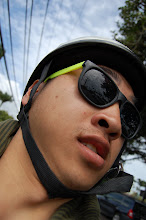
In La Pita,
The team was required to design a bridge that followed requirements such as accounting for horizontal loads from flooding, using the allowable stress method, and have a 50-year life expectancy. In addition two alternative designs had to be made using materials; timber, concrete, and steel. For the final product the team was required to submit AutoCAD drawings of the floor plan and a report with calculations that satisfied these requirements. A presentation of the final design was given to a panel of judges at
With the second round of midterms and finals happening during period, how was this possible? Through the knowledge gained from previous courses, the team was able to accomplish this goal. “Our SE152 (timber class) helped significantly throughout this project”, stated Chang. Timber was used to design the winning bridge because of its availability, affordability, and its impact on the environment. In addition, Michael Germeraad considered SE103 (structural design) to be helpful in having the basic foundations of designing structures. These classes provided the initial building blocks to becoming engineers.
Although the team had the skills and experience needed to finish this project, none of this could be accomplished without the captain, Amanda Wong. She took the project to another level by applying ASD (allowable strength design) code, a professional standard in using the allowable stress method, to provide accurate results. “Also because it was a timber bridge we used the NDS (National Design Specification) for wood construction, a code book, in order to determine the member sizes”, stated Wong. Furthermore she utilized and delegated all team members’ so that the project was completed on time.
Everyone on the team had a great experience, among these students, Jeffrey Lam, a transfer student, had an enlightening one. “Although I had just started taking major classes, I learned so much about materials, economic efficiency, and environmental factors”, stated Lam. For Lonnie Chang, “this has been an unreal experience.’ Though it has been a pleasure for these students to take on such a challenge, the people of La Pita will be truly grateful for their efforts.






No comments:
Post a Comment